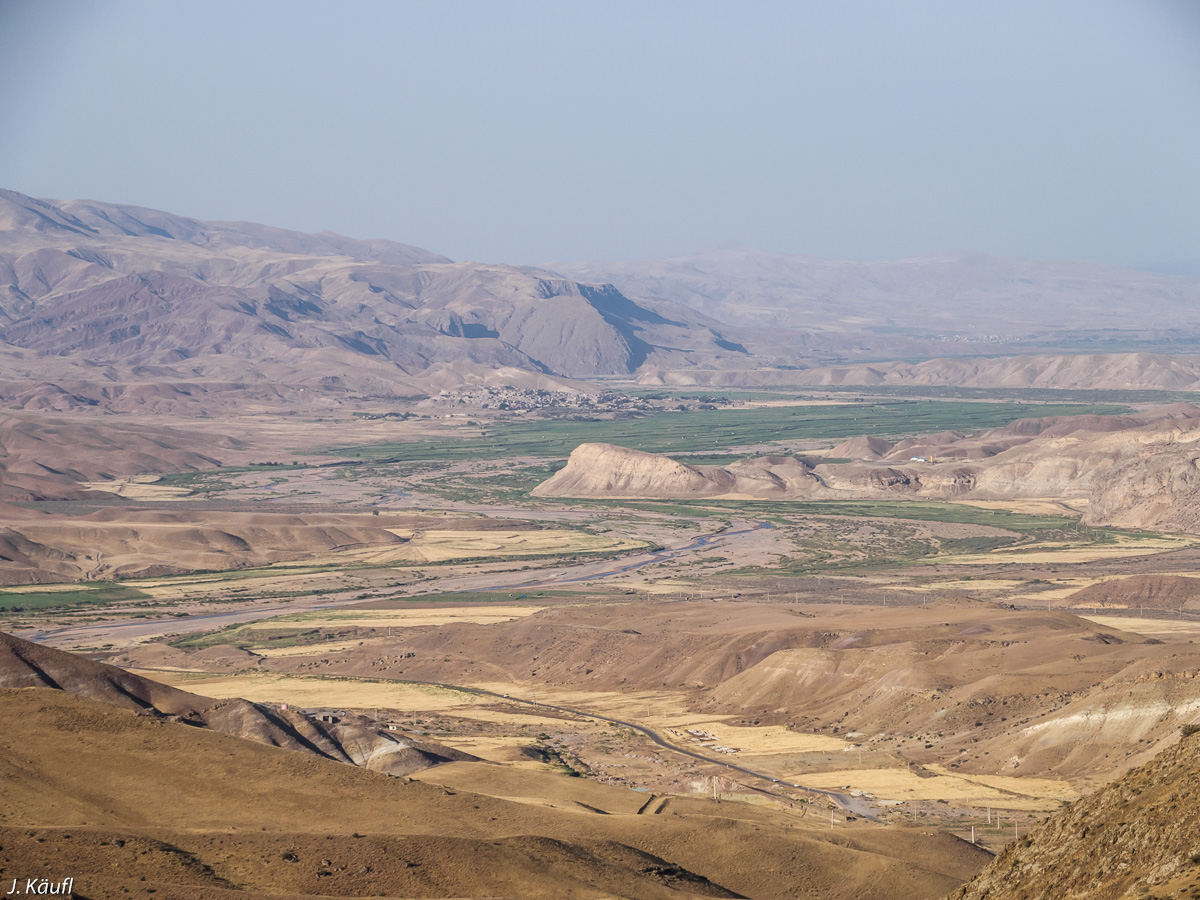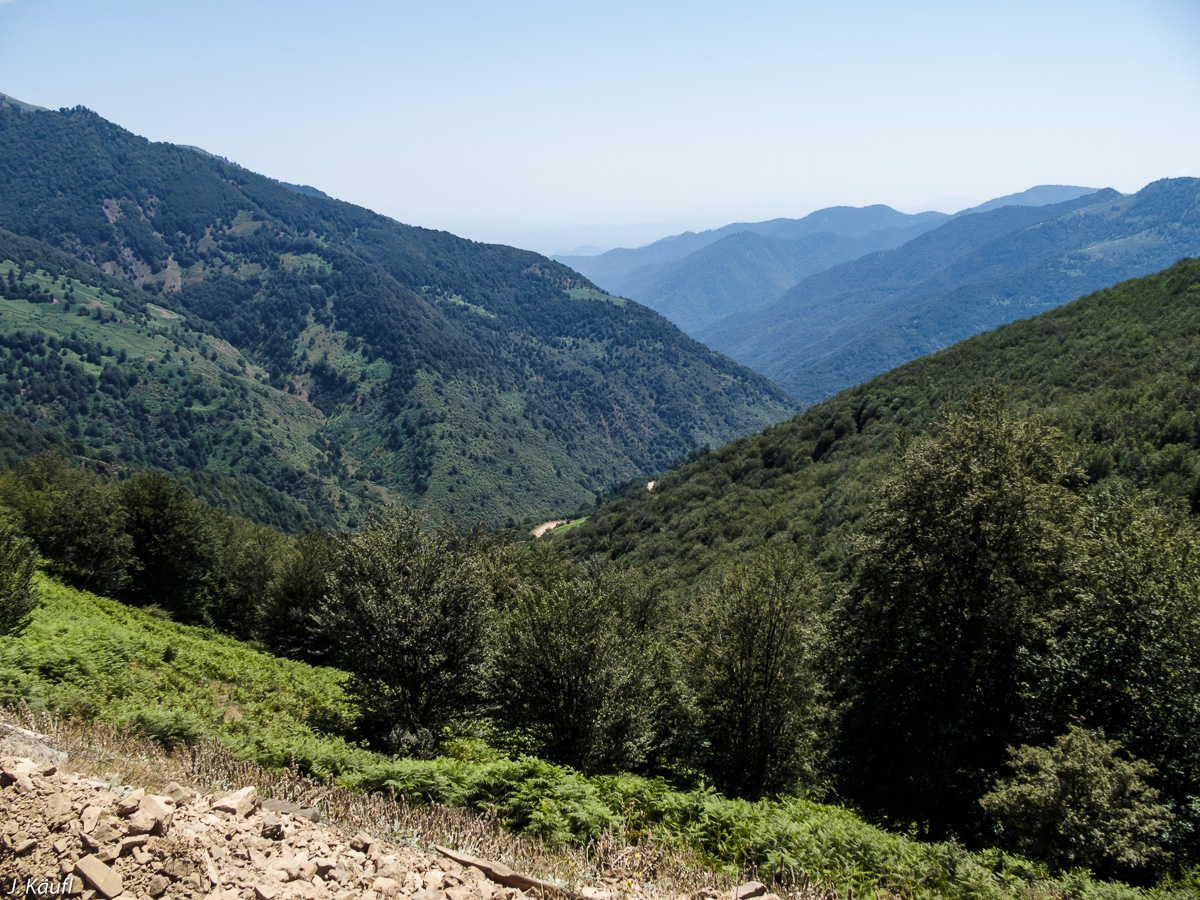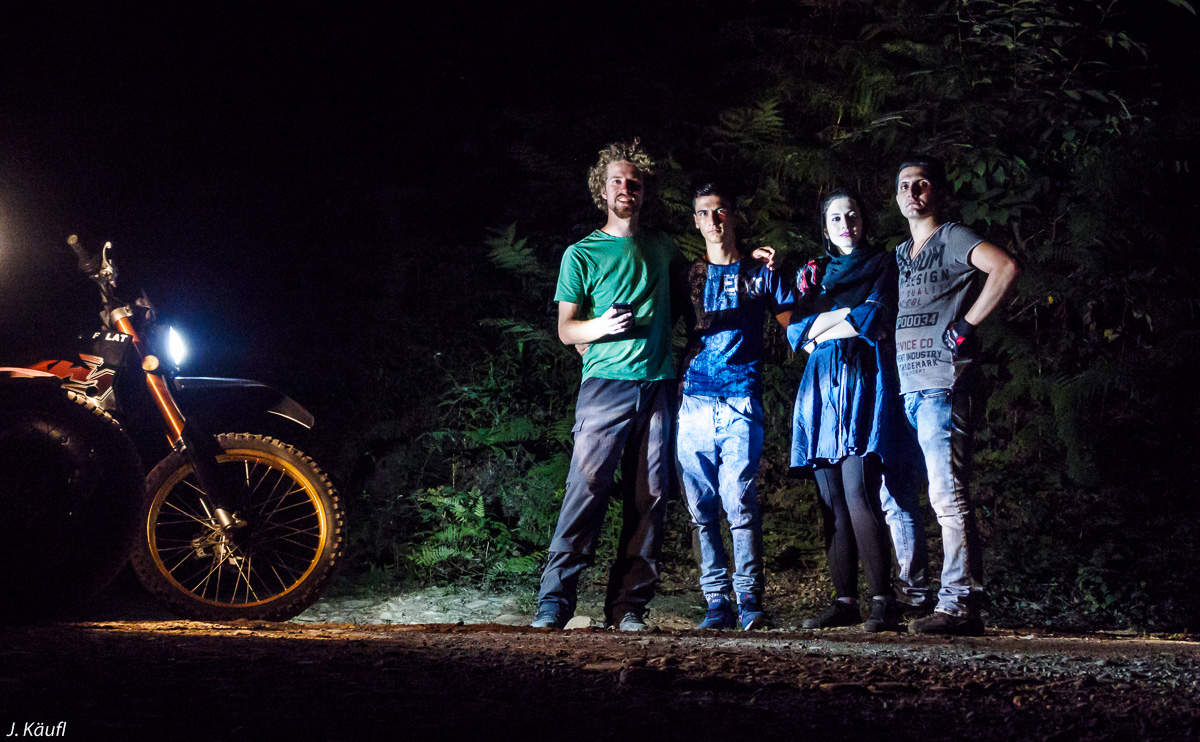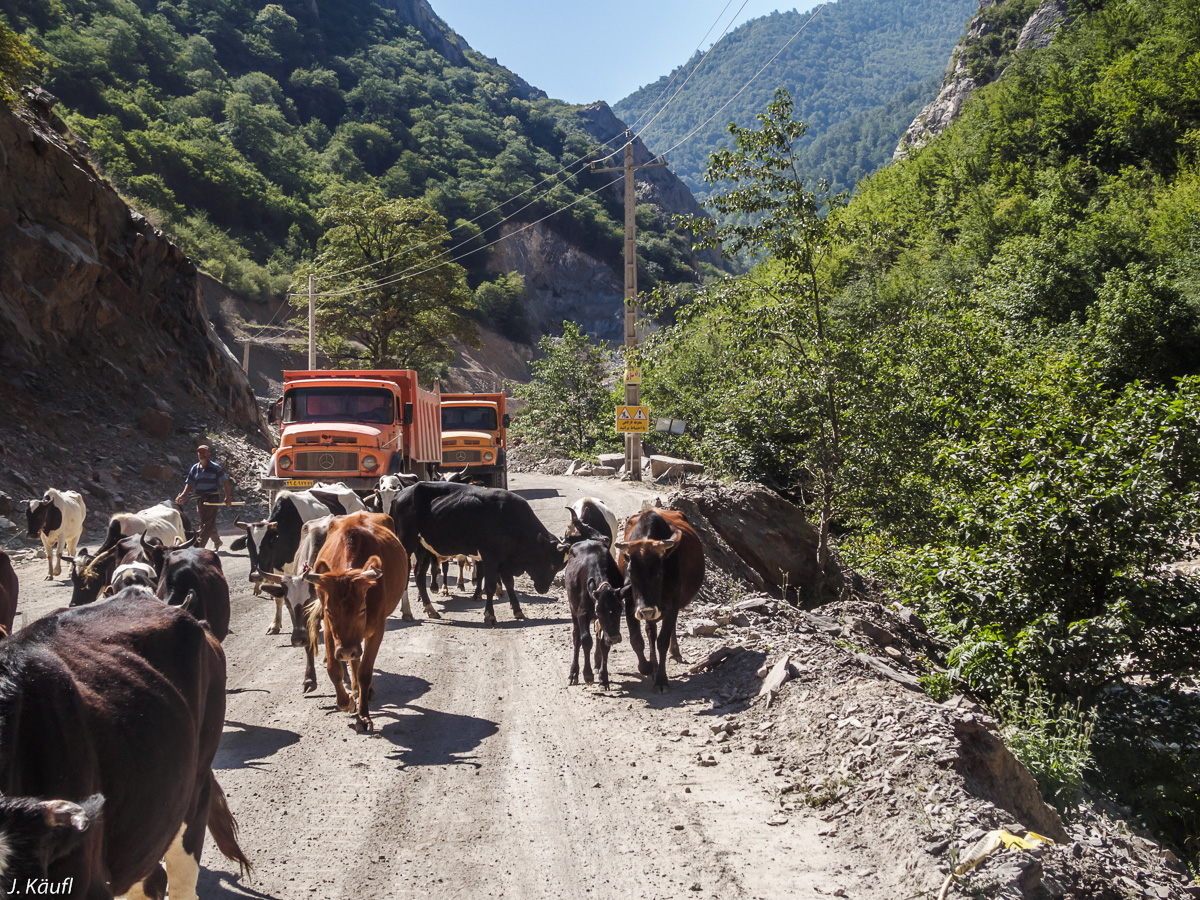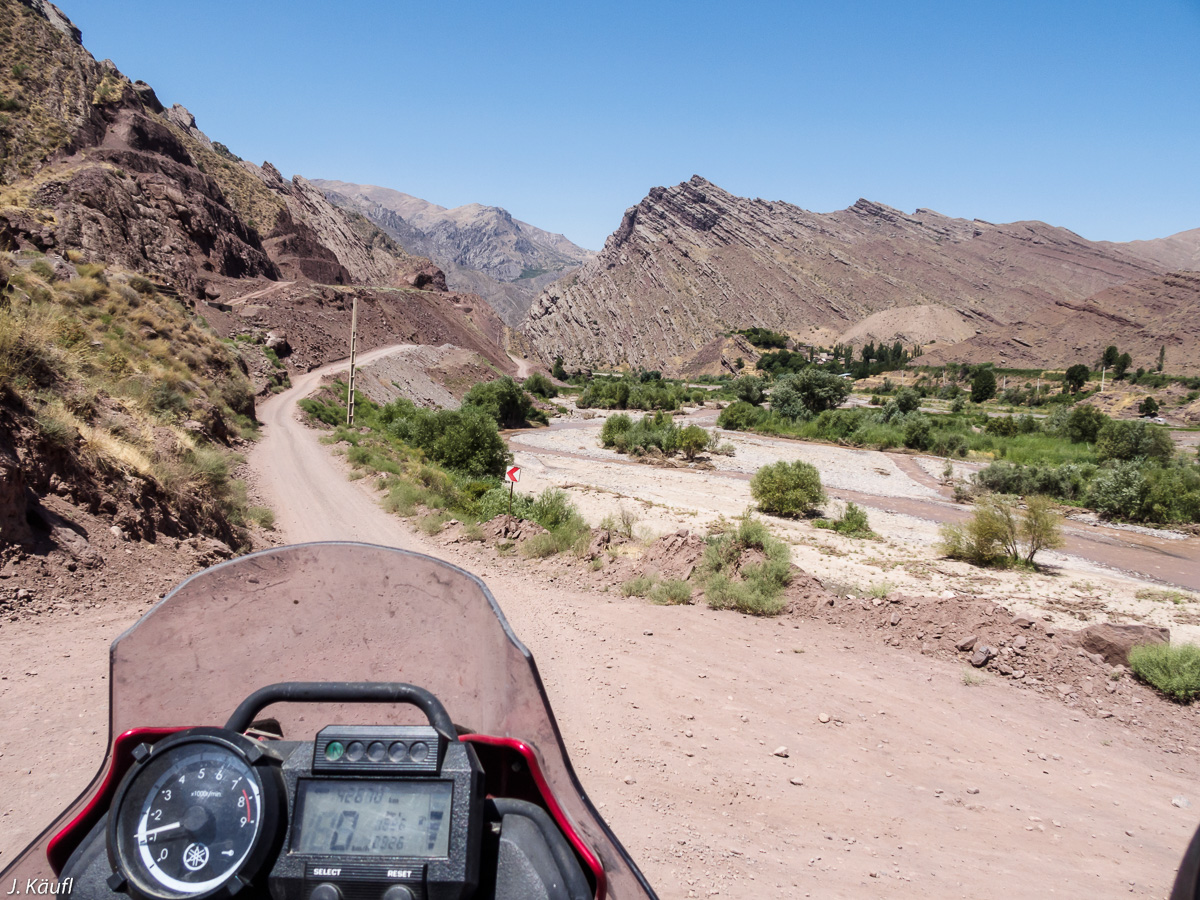Today, I had a mountain range to cross. In between me and the Caspian Sea were the Alborz Mountains. With peaks exceeding 4000 m (Mt. Damavand being the highest with 5670 m) and a pass road that climbs up to 2200 m it divides the region in two distinctively different kinds of vegetation. An (almost) nonexistent one on the western slopes and a somewhat mediterranean/subtropical vegetation on the side facing the Caspian Sea.
In one of the valleys extending towards the sea, I passed the village of Masouleh. It’s built on the mountainside and boasts a unique architectural layout, which makes the yard of the building above the roof of the building below. It didn’t take long until I found myself invited by Roy and Hajid, who wanted to share a glass of whiskey with me. Considering the fact that all alcohol is banned in Iran, I was rather surprised. Later we met two young iranian women and Roy organised dinner and tea to spend an amazing evening on the roofs of Masouleh.
On the next day I only covered the short distance from Masouleh to Lahijan. There, Iranian hospitality strikes again. Kambiz, a motorcyclist from Lahijan saw me riding through the city, waved me down and invited me to join his wife Fariba and brother-in-law for lunch. I did not only stay for lunch and the shisha afterwards but also for the night and Kambiz took the chance to invite his guest from the other end of Eurasia to a nightly ride-out through the forests and hills close to Lahijan. The ride started rather relaxed but turned into a proper enduro tour as soon as we left the paved roads and followed some goat tracks, loosely packed with dirt and sand, only illuminated by our headlights, to get a view over the nightly Lahijan. Despite the fact, that we had to navigate treacherous terrain in almost total darkness and turn around a few times to find passable tracks, I enjoyed riding in the cool night air without the merciless sun.
I left Lahijan early in the next morning, but there was no escape from the sun. Close to the shores of the Caspian Sea, the air was hot and humid, which explains the lush green flora here, that I would have expected to find in south-eastern Asia and not in Iran. I was actually riding through jungle like forests before I started to climb the Alborz Mountains again to free myself from their clasp around the Caspian Sea and make my way over the iranian central plateau towards Isfahan. The paved road quickly turned into a dirt road and wound its way up to a pass with an elevation of 3200 m and comfortable temperatures. On the other side Alamut or the Valley of the Assassins waited for me. And indeed a lone split pin assassinated my rear tire, punctured the inner tube and left me stranded on the mountain road.
I happily unpacked the tire irons and started to remove the rear wheel, after all I was trained and prepared for this kind of incident. Or rather would have been trained and prepared, if the split pin would have chosen the front wheel for its malicious attack. That was the wheel where I trained to dismount a tire at home. I never tried it on the rear wheel, “What fundamental difference can there be anyway,” I thought. The fundamental difference came in the form of a little bulge on the inside of the rim, which held the tire in place. After an hour of cursing, sweating and pleading the tire was still on the rim and even a farmer who rolled the wheel of his car over the tire could not help me.
In the end I rode the Tenere with the flat tire approx. 5 km to the next village (sitting all the way to the front, basically on the tank, to have as little weight on the rear wheel as possible), where I parked it in front of a hotel and hired a taxi driver to bring me and the wheel to a tire repair shop in the next town. The mechanic there had the special tool (a big-ass sledge-hammer) required to make short work of the tire and patched the inner tube. Back at the hotel some locals, on of which claimed to be a motorcycle mechanic, helped me to mount the rear wheel. The process of mounting the wheel is quite tricky, you have to support the heavy wheel, line up brake disk and brake caliper, prevent two spacers from falling in the dirt and insert the axle at the same time. So I was thankful for a second pair of hands, mechanic or not. Needless to say, after that day I dropped dead in my bed in the hotel room.
On the next day, there was one last pass to cross before descending into the central plain and head for Isfahan. With an elevation of only 2500 m this pass wasn’t as high as the previous one but the landscape was equally amazing. A landscape I pretty quickly started to miss, when I tackled the 400 km of boring flat main road to Isfahan.
Route (Fullscreen):
